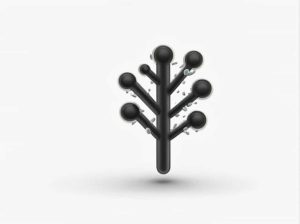The stratum granulosum is one of the five layers of the epidermis the outermost layer of the skin. This layer plays a crucial role in the skin’s barrier function helping to protect the body from water loss pathogens and environmental damage.
Understanding what happens in the stratum granulosum is important for learning how the skin works how it renews itself and how it maintains hydration and defense.
This topic explores the structure function and processes of the stratum granulosum as well as its role in keratinization and skin protection.
1. What Is the Stratum Granulosum?
The stratum granulosum is the third layer of the epidermis located between the stratum spinosum and the stratum lucidum (or stratum corneum depending on the skin type).
This layer is also known as the granular layer because the cells within it contain dark-staining granules that are rich in keratohyalin and lamellar bodies.
A. Location in the Epidermis
The epidermis consists of five layers (from deepest to outermost):
- Stratum basale – The basal layer where new skin cells are created.
- Stratum spinosum – A layer where cells begin to produce keratin.
- Stratum granulosum – The layer where keratinization starts.
- Stratum lucidum (only in thick skin) – A translucent layer found in palms and soles.
- Stratum corneum – The outermost layer consisting of dead keratinized cells.
2. What Happens in the Stratum Granulosum?
The stratum granulosum is where skin cells undergo key transformations before they reach the surface. These changes are essential for creating a strong and waterproof barrier.
A. Keratinization Process Begins
Keratinization is the process where skin cells (keratinocytes) become filled with keratin a tough protein that gives skin its strength.
- In the stratum granulosum keratinocytes start producing keratohyalin granules which help in the formation of keratin fibers.
- These granules contain filaggrin a protein that binds keratin fibers together making the cells more rigid and durable.
B. Production of Lamellar Bodies for Waterproofing
One of the most critical functions of the stratum granulosum is the formation of the skin’s waterproof barrier.
- Keratinocytes release lamellar bodies which contain lipids (fats) that help seal the skin and prevent water loss.
- These lipids form a protective layer that keeps moisture in and blocks harmful substances from entering the body.
C. Cell Death Begins (Programmed Cell Death or Apoptosis)
As keratinocytes move through the stratum granulosum they begin to lose their nuclei and organelles.
- This process known as apoptosis is essential because it allows the skin to create a tough protective outer layer.
- By the time the cells reach the stratum corneum they are completely dead but still serve an important function in skin protection.
D. Formation of a Protective Barrier
The combination of keratinization lipid production and cell death in the stratum granulosum helps form a strong protective skin barrier that:
- Prevents water loss.
- Protects against bacteria viruses and environmental damage.
- Helps maintain skin hydration and elasticity.
3. Why Is the Stratum Granulosum Important?
The stratum granulosum is a critical layer in the epidermis because it ensures that the skin remains strong flexible and resistant to damage.
A. Prevents Dehydration
Without the lamellar bodies and lipids produced in this layer the skin would become dry and cracked leading to dehydration and increased risk of infection.
B. Acts as a Protective Shield
The keratin and lipid barrier created in the stratum granulosum shields the body from harmful microbes chemicals and UV rays.
C. Essential for Skin Renewal
Since new cells are constantly being produced in the stratum basale and moving upward the stratum granulosum ensures that they are properly processed and transformed before they reach the surface.
4. What Happens When the Stratum Granulosum Is Damaged?
If the stratum granulosum is not functioning properly the skin’s barrier can become weak leading to various skin disorders.
A. Skin Conditions Related to Stratum Granulosum Dysfunction
-
Psoriasis
- In psoriasis the skin cells move through the epidermis too quickly which disrupts the formation of the keratin barrier.
- This results in scaly inflamed patches on the skin.
-
Eczema (Atopic Dermatitis)
- In eczema the skin barrier is compromised leading to increased water loss and irritation.
- This makes the skin dry itchy and more sensitive to allergens.
-
Ichthyosis
- A rare genetic condition where keratinization is abnormal causing thick scaly skin due to improper cell shedding.
-
Xerosis (Dry Skin)
- Occurs when the lipid barrier in the stratum granulosum is disrupted leading to dry and flaky skin.
B. How to Keep the Stratum Granulosum Healthy
Maintaining a healthy stratum granulosum is essential for overall skin health. Here are some ways to support it:
-
Use Moisturizers with Lipids
- Products containing ceramides fatty acids and cholesterol help reinforce the skin barrier.
-
Avoid Harsh Cleansers
- Soap with high pH can strip away the natural lipids weakening the stratum granulosum.
-
Stay Hydrated
- Drinking enough water supports skin hydration and cell function.
-
Eat a Balanced Diet
- Consuming foods rich in omega-3 fatty acids vitamins A C and E helps maintain strong healthy skin.
-
Use Sunscreen
- UV exposure can damage the stratum granulosum so wearing broad-spectrum sunscreen is essential.
The stratum granulosum is a vital layer of the epidermis that plays a key role in keratinization waterproofing and skin protection.
- It helps form the skin’s barrier preventing dehydration and infection.
- The keratohyalin granules and lamellar bodies produced in this layer ensure that skin remains strong and flexible.
- Damage to the stratum granulosum can lead to dryness irritation and skin conditions like eczema and psoriasis.
By understanding its function and taking care of your skin you can help maintain a healthy and protective epidermis for overall well-being.



